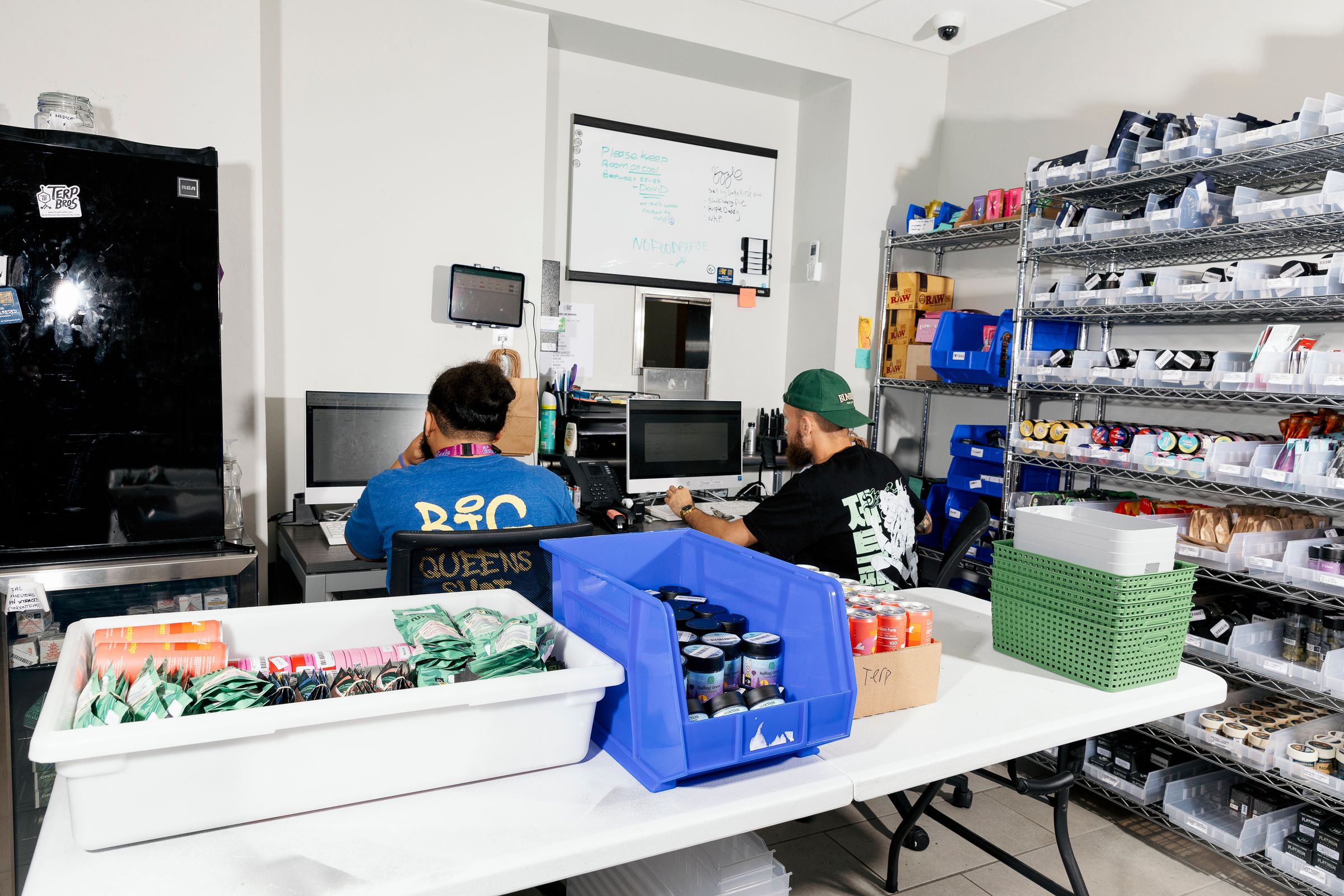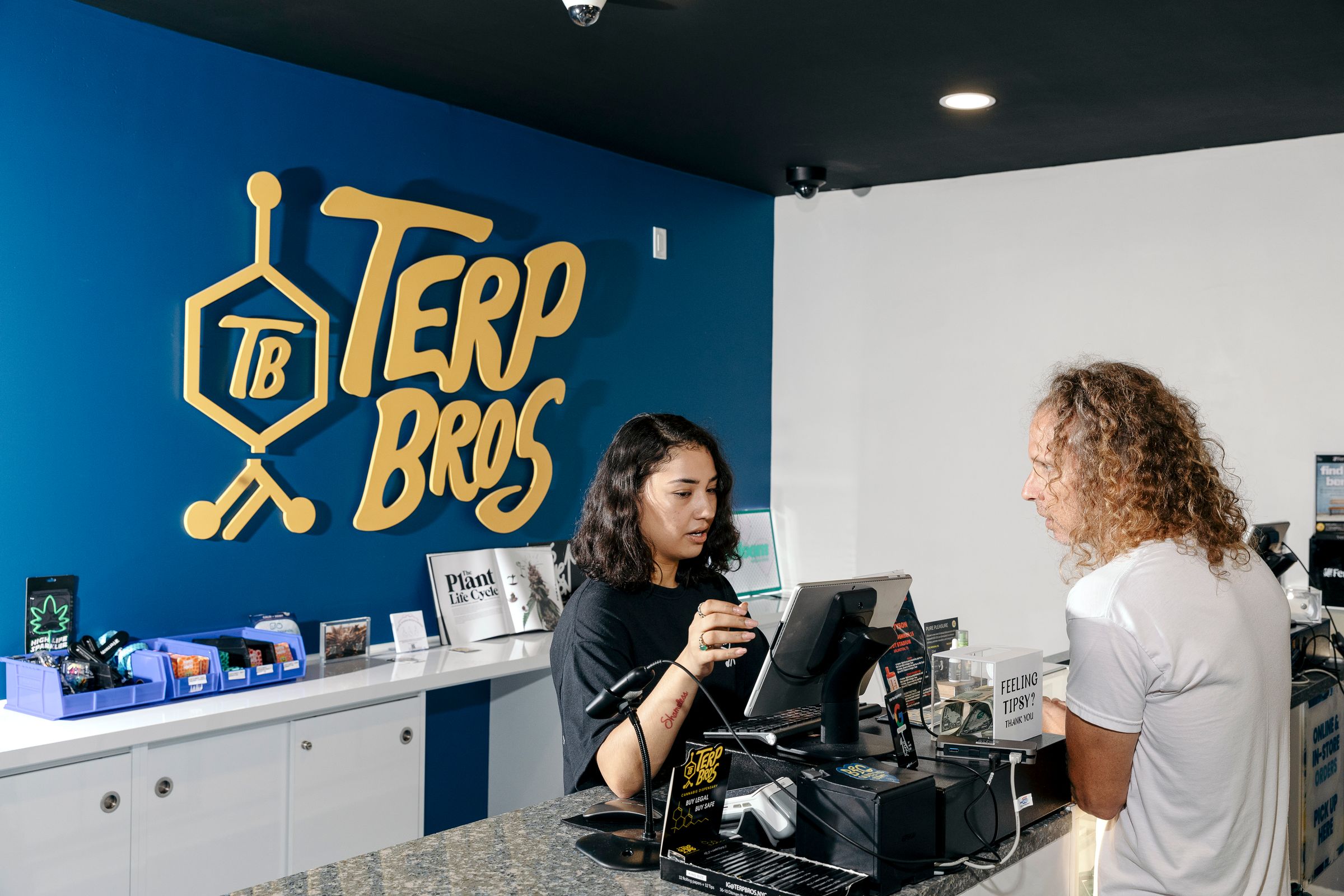Here’s Why This Jar of Weed Costs $60 at a Legal N.Y.C. Dispensary
Aug. 20, 2024


Here’s Why This Jar of Weed Costs $60 at a Legal N.Y.C. Dispensary
It costs to play by the rules.
That’s why 52 percent of Terp Bros’s income after the costs of products goes to federal, state and local income taxes. Were the dispensary a traditional business, it would pay about 36 percent, according to the accountant, Justin Ash of Accounting Buds.
Customers also pay a higher sales tax on cannabis (13 percent, or an extra $7.80 on those jars of 91 Octane) than on alcohol (8.875 percent).
And legal stores have faced competition from the unregulated market, which exploded after recreational cannabis was legalized in 2021. A slow licensing process, tight rules and a lack of state-promised financial support for legal sellers initially helped illicit retailers gain an advantage. In recent months the authorities have cracked down on illegal shops, even as thousands remain in business.
Still, sales have risen at licensed dispensaries, and regulators have proposed easing bans on discounts and loyalty programs to help attract customers. The state also expanded licensing beyond the initial pool of people with cannabis convictions and business experience.
To stay afloat, Mr. Rivera, 37, said, “you have to be very lean.”
Terp Bros sells every product — from drinks to edibles to smokable flower, all of which must be prepackaged — for about twice the wholesale price, a common industry markup to defray the costs of a legal business. Prices vary based on quality, availability, demand and seller discretion.
Before tax, legal dispensary customers pay an average of $7.62 more for those jars of 91 Octane than for what’s available on the unregulated market, said James Cosgrave, an owner of Rolling Green Cannabis, the farm that sells them to Terp Bros. Each jar costs almost $30 wholesale, plus a 9 percent tax. The farm pays for glass jars (which must be childproof), lab testing and tracking software.
